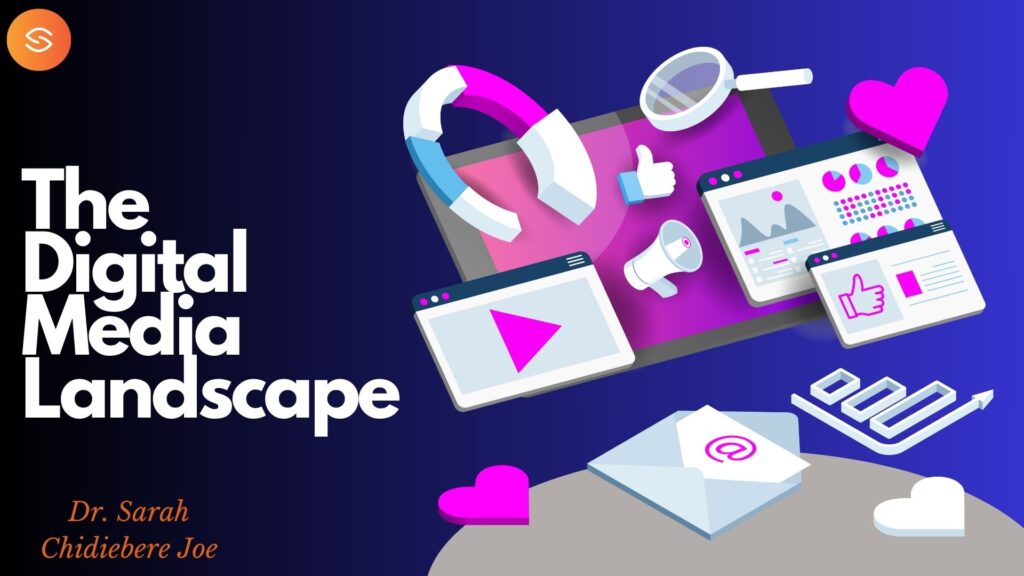Development communication involves the use of communication tools and strategies to facilitate social and economic development in ways that will result in improved quality of life for citizens. Like legacy or traditional platforms, digital tools play a critical role in communication for development.
Digital Tools and Platforms
Digital tools are software applications, platforms, or technologies that utilise digital technology to execute tasks, enhance productivity, and optimise diverse functions. These tools cover a wide range of applications and services, addressing specific needs in different industries and sectors. Examples include:
- Social Media Platforms: Facebook, X (Twitter), Instagram, LinkedIn, Tiktok
- Websites and Blogs
- Mobile Apps
- Podcasts and Webinars
- Online Surveys and Feedback Forms
- Interactive Maps
- Video Production
- Virtual Reality (VR) and Augmented Reality (AR)
- Social Messaging Apps: WhatsApp, Telegram
- Crowdsourcing Platforms
- E-learning Platforms
- Data Visualisation Tools: Tableau, Google Charts
- Collaboration Tools: Microsoft Teams, Slack
- SMS and Text Messaging
The aforementioned digital tools can be employed to efficiently convey development messages to diverse audience groups. Hence, when utilising these tools, it is crucial to identify the specific requirements and preferences of the target audience and maintain ethical awareness. Furthermore, regular evaluations, reassessments, and the implementation of feedback mechanisms are essential for determining the efficacy of the adopted communication strategies.
Social Media Dynamic, Trends & Their Influence on Development Initiatives
Social media dynamics refer to the ever-changing patterns, interactions, and trends within social media platforms. These dynamics are shaped by the behaviours, preferences, and activities of users, as well as the algorithms and features implemented by the platforms themselves. Key aspects of social media dynamics include:
- User Engagement: The level of interaction, likes, shares, comments, and overall participation by users with content on social media.
- Content Virality: The rapid spread and popularity of certain content, often influenced by factors like relevance, appeal, and shareability.
- Algorithm Changes: Platforms often adjust their algorithms, affecting the visibility and distribution of content in users’ feeds.
- Trending Topics: Subjects or hashtags that gain widespread attention and discussion among users, often fueled by current events or pop culture.
- Influencer Impact: The influence of social media influencers on user opinions, trends, and brand perceptions.
- Community Building: The formation of online communities around shared interests, causes, or demographics.
- Platform Features: The introduction of new features, tools, or changes in interface design that impact how users interact with the platform.
- Privacy Concerns: Ongoing debates and discussions about user privacy, data protection, and the ethical use of personal information on social media.
- Crisis Response: Social media’s role in disseminating information during crises, emergencies, or major events.
- Adoption of New Platforms: The emergence and growth of new social media platforms, leading to shifts in user behavior and preferences.
- Ephemeral Content: The popularity of short-lived content, such as stories, that disappears after a certain period, influencing content creation strategies.
- Evolving Demographics: Changes in the age, location, and interests of social media users, affecting the target audience for content.
- Cultural Sensitivity: The need for brands and individuals to be aware of and respond to cultural trends, events, and discussions on social media.
- Meme Culture: The creation, spread, and evolution of internet memes, influencing humor and communication styles on social platforms.
- Fake News and Misinformation: Challenges related to the spread of false information, requiring efforts to combat misinformation and promote fact-checking.
Understanding social media dynamics is crucial for businesses, influencers, and individuals aiming to navigate and leverage these platforms effectively. Staying informed about trends and adapting strategies accordingly allows users to engage meaningfully and stay relevant in the dynamic landscape of social media.
Social media dynamics and trends play a significant role in shaping the landscape of development initiatives. Here are some key aspects to consider:
1. Information Dissemination:
Rapid Spread of Information: Social media allows information to be disseminated quickly, reaching a vast audience in real-time. This can be crucial for spreading awareness about development projects and initiatives.
2. Community Engagement:
Two-Way Communication: Social media enables two-way communication, allowing development organizations to engage directly with communities. This engagement fosters a sense of inclusion and encourages community participation in initiatives.
3. Crowdsourcing and Collaboration:
Crowdsourced Solutions: Platforms like Twitter and Facebook facilitate crowdsourcing of ideas and solutions, allowing communities to actively contribute to the development process.
4. Visibility and Advocacy:
Global Reach: Social media provides a global platform, allowing development organizations to showcase their work and gain international support and collaboration.
5. Storytelling and Narrative Building:
Visual Storytelling: Platforms like Instagram and YouTube enable the use of visuals and videos to tell compelling stories, creating emotional connections and garnering support for development causes.
6. Data Visualization:
Infographics and Data Presentation: Social media platforms support the sharing of infographics and visually appealing content, making it easier to convey complex development data and statistics.
7. Influencer Engagement:
Influencer Partnerships: Collaborating with influencers and thought leaders in the development sector can amplify the reach and impact of development initiatives.
8. Real-Time Monitoring and Feedback:
Monitoring and Evaluation: Social media can be used for real-time monitoring of public sentiment and feedback, providing valuable insights for adapting and improving development strategies.
9. Challenges and Risks:
Misinformation and Rumors: The rapid spread of information on social media also comes with the risk of misinformation. Development organizations need to actively manage and counter false narratives.
10. Trends in Fundraising:
Crowdfunding: Social media platforms have given rise to crowdfunding campaigns for development projects, allowing organizations to directly appeal to a wide audience for financial support.
11. Advocacy and Social Movements:
Amplifying Causes: Social media has played a crucial role in amplifying social causes and mobilizing support for various issues, influencing policy changes and social movements.
12. Crisis Response and Relief:
Real-Time Crisis Communication: During emergencies or natural disasters, social media becomes a vital tool for real-time communication, coordination, and mobilization of resources.
13. Privacy and Ethical Considerations:
Data Privacy: Development organizations must navigate privacy concerns when collecting and using data from social media, ensuring ethical practices in information handling.
14. Adaptation to Platform Changes:
Algorithm Changes: Development initiatives need to adapt to algorithm changes on platforms like Facebook and Instagram to maintain visibility and engagement.
15. Educational Initiatives:
Online Learning: The rise of social media as an educational platform allows for the dissemination of educational content, supporting capacity-building initiatives.
Development organisations must stay abreast of social media trends, adapt their strategies accordingly, and use these platforms as powerful tools to enhance the impact of their initiatives. The integration of social media into development communication plans can foster transparency, inclusivity, and community-driven development.

